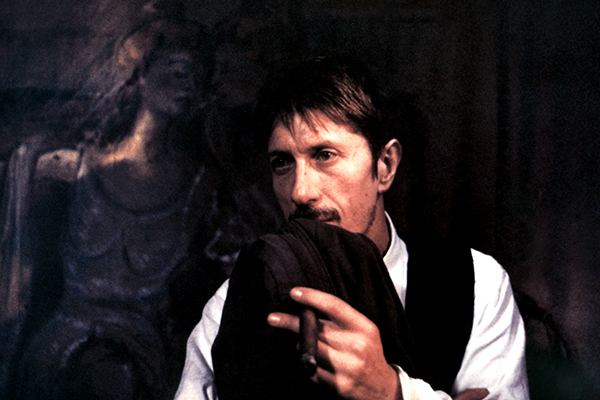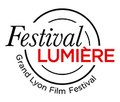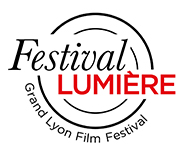Self-portrait
"The script could have been
entitled 'Maurice Pialat'!"
PostED ON OCTOBER 14
The making of Van Gogh, as recounted by Sylvie Pialat, the filmmaker's last partner.
Thirty years after its presentation at the Cannes Film Festival, Van Gogh, which was watched by more than a million viewers and won Jacques Dutronc the César for Best Actor, is back on the big screen in a brilliantly restored version. Producer and scriptwriter Sylvie Pialat shares her memories.
The making of Van Gogh, as recounted by Sylvie Pialat, the filmmaker's last partner.
Thirty years after its presentation at the Cannes Film Festival, Van Gogh, which was watched by more than a million viewers and won Jacques Dutronc the César for Best Actor, is back on the big screen in a brilliantly restored version. Producer and scriptwriter Sylvie Pialat shares her memories.
How was Van Gogh born?
Thanks to Daniel Auteuil. In 1988, he contacted Maurice to tell him he wanted to film with him. He had just acquired the rights to The Last Days of Charles Baudelaire by Bernard-Henri Lévy, with the intention of adapting it for the cinema, and invited him to take on the project. But Maurice, who painted a lot and was not familiar with the daily life of a writer, suggested that he tell the story of Van Gogh instead. The film took a long time to materialise but without Daniel it would never have existed.
Why Van Gogh rather than Poussin or Seurat, whose work Maurice Pialat admired?
Maurice had already directed a small film on Van Gogh and Auvers-sur-Oise for Pathé and the artist had a tremendous destiny that interested him. He was very well acquainted with Van Gogh’s correspondence with his brother and thought he could make a script from it quite easily.
How did the writing process go?
He started writing in constant contact with Daniel Auteuil, in a way that he hadn't done for a very long time. It was as if there had been a divine inspiration that helped him overcome his holy horror of writing. For a year, we shared our lives almost daily with Daniel Auteuil. It was quite an adventure for them and Maurice came up with a killer script. Daniel turned down everything to make this film. He had only one requirement: to perform in the play, Les Fourberies de Scapin in the Court of Honour of the Palace of the Popes in Avignon.
Why did Daniel Auteuil finally have to give up?
The script and the financing were progressing, but not the sets: we couldn't find anything like Auvers-sur-Oise. Besides, Maurice didn't like being forced to travel hundreds of kilometres to shoot the various parts of his films. So we had to find a place at all costs that could bring together places similar to the Auberge Ravoux or the house of Doctor Gachet... and that took us an infinite amount of time, until we created a catastrophe: the date of the shooting finally fell exactly on the date of Daniel's imperative and that was the end of the story with him, even though he had been totally involved, even taking painting lessons. It was terrible for everyone.
How did Jacques Dutronc end up on the project?
With Dutronc, Maurice had the idea of wrapping up an unfinished story because he already wanted him for Loulou (1980), whose main role was finally played by Depardieu. For him, the person who most physically resembled Van Gogh was the tennis player Boris Becker. But you weren't going to prevent a tennis player from being on the court for two years!

Van Gogh, 1991
How did he direct Dutronc?
He was not someone who directed his actors in the true sense of the word. Between his actors and himself, everything happened with very few words. And that worked out well because Jacques Dutronc is rather quiet! Maurice did not want Dutronc to masquerade as Van Gogh. Besides, Jacques never acts with anything more than a little hair dye and a pair of weathered jeans with a shirt. Maurice's obsession was to be precise about the easel, the paint and the painter's gestures. So it was Maurice who used his hand for these segments.
The film is above all a reflection on art and the difficulty of creating...
Maurice took some artistic liberties in order to focus on creation and how someone who is trying to create a work lives. Especially since Van Gogh's life remains an enigma. Nobody knows exactly how he died. Only his relationship with his brother is documented, since their correspondence is extensive. So the official biography left a lot of room. We were not obliged to follow a succession of real facts because there are none. Moreover, Dutronc slipped into the skin of this character without seeking a resemblance, which was ultimately pointless because nobody really knew what Van Gogh looked like.
What part of himself did Maurice Pialat reveal through this film?
Only he could have answered this question exactly, but I believe that Van Gogh offered him the opportunity to do an autobiography. At one point, the script could just as easily have been called "Maurice Pialat"! He also gave himself the possibility of forgetting the model to propose something more universal. He tried to understand Van Gogh through his own feelings and to translate his emotions, he drew on his own. Vincente Minnelli's version (1956) describes more the life of the painter amidst his paintings. In Maurice's film, it is the other way around.
A word about the filming?
Everything was very difficult. After Daniel Auteuil's departure, we lost funding, even though the film had not been financed at the level it cost from the start. It was interrupted, and after Canal+ and Gaumont came to the rescue, we finished it with a very limited crew, and in particular with a set decoration team that worked twice as hard. We could only shoot Van Gogh's death in his room. Suffice it to say that there was still a lot to be done...
Maurice Pialat confessed that he had a lot of fun on this shoot despite the various setbacks?
Maurice was very comfortable with long shoots. He was in his element while filming. He took enormous pleasure in directing the table scenes like in Le Temps des Cerises. I also think of the homage to John Ford in the cabaret scene, the homage to the western in the scenes at the water's edge, when the characters dance... Maurice was really the first viewer of his film and to see that everything worked gave him great joy. For him, the feeling of filmmaking was shooting and Van Gogh was a shoot in which he struggled. All the sets were in the same place and it was as if the people in the village where we were shooting were coming out of the woodwork to recreate the atmosphere of the time. For Maurice, it was very exciting.
Interview by Benoit Pavan
Screenings
Van Gogh by Maurice Pialat (1991, 2h48)
UGC Ciné Cité Confluence Thu14 8:30pm | Lumière Terreaux Fri15 10am | Sainte-Foy-lès- Lyon Sat16 5pm
Previously unseen 2K restoration supervised by Gaumont. The image was restored by Eclair and the sound by Le Diapason, using the original material.
Theatrical rerelease: 27 October 2021 by Capricci.

